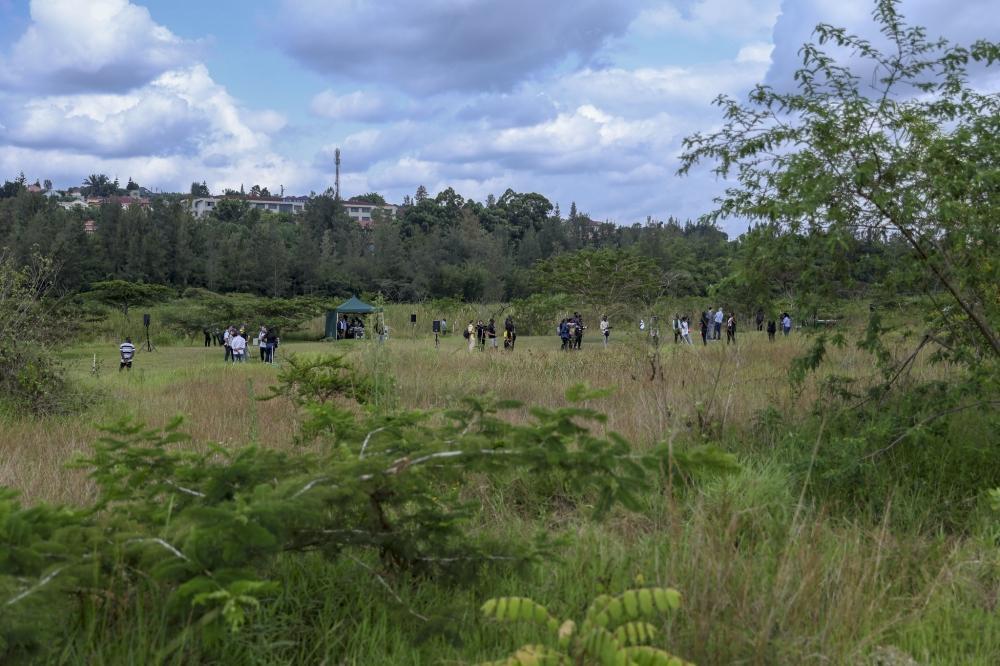Africa-Press – Rwanda. Rwanda’s Urbanisation and Rural Settlement Sector Strategic Plan 2024–2029 lays out an ambitious roadmap for inclusive, climate-resilient urban growth and improved rural living standards.
Backed by a projected Rwf840 billion in investments, the plan builds on past achievements and sets new targets across housing, infrastructure, and urban governance.
It follows the old strategic plan that was implemented from 2016/17 through 2023/24.
Here are ten key things to know about the new strategy by the Ministry of Infrastructure:
Urban population set to increase with better planning
The government aims to increase the proportion of its population living in urban areas from 27.9 per cent (as per Rwanda Population and Housing Census, 2022) to 39.2 per cent by 2029.
The strategy will focus on executing projects including the second phase of Rwanda Urban Development Project (RUDP 2), the elaboration and implementation of RUDP 3, the Urban Economic Development Initiative (UEDi 2), Rwanda Housing Finance Project, and Kigali Informal Settlement Upgrading Project (KISUP).
It will focus on implementing urban development projects in 12 cities and towns across the country.
Expanding green public spaces
The strategic plan aims to boost the proportion of the built-up area of cities that is open space and green space for public use for all, from 19.8 per cent as the baseline (as of 2023/24) to 30 per cent by 2028/29.
Planned activities include developing the strategy for urban natural assets identification, preservation, restoration, and activation, rehabilitation of 491ha of urban wetlands in the City of Kigali, reactivation and development of five public green spaces in Muhanga, Huye, Rwamagana, Nyagatare, and Rusizi, as well as integration of open and green public space and nature-based solutions in urban development projects.
Tackling unplanned settlements
To reduce the number of urban dwellers living in unplanned settlements from 60 per cent to 52.7 per cent, the strategy includes the implementation of RUDP2 in the City of Kigali and secondary cities, Kigali Informal Settlement Upgrading Project, and rehousing households in urban informal settlements
To this end, it plans upgrading 1,160 hectares of urban informal or unplanned settlements, and rehousing 3,436 households under an upgrading model.
Affordable and social housing initiatives
Affordable home ownership remains a focus, with targets to construct 1,405 affordable housing units for sale (from a baseline of 7,884) and deliver 1,296 social and affordable rental units in Kigali and satellite cities.
Social rental housing refers to subsidised or affordable rental options offered below market rates. Housing units under this category are generally provided by public institutions or government-supported entities to assist people who cannot afford private market rents.
Resettling of people from scattered housing and high-risk zones
Through the plan, the government will support the construction of 32,000 new rural dwelling units for households relocated from scattered settlements. In addition, 6,089 housing units will be built for disaster-prone families under the auspices of the government – to facilitate their relocations from high-risk zones.
Boosting rural planned settlement
The proportion of rural households living in integrated planned rural settlements is expected to increase from 65.4 per cent (as the baseline in 2023/24) to 81.1 per cent by 2028/29, through actions including the development of layout plans for designated rural settlements, and mobilisation and facilitation of rural households to settle in planned settlements.
Strengthening urban management
To improve local governance, 11 City Management Offices (CMOs) will be established in satellite and secondary cities. These will enhance the management structure and capacity to appropriately manage accelerating urbanisation and its related needs of business attraction and facilitation, local social and economic development, housing provision, and climate-responsive infrastructure development.
Acquiring more government office space, utilising idle buildings
To reduce government rental expenses, according to the strategy, the strategy seeks to, among others, ensure effective and efficient management of government buildings through acquisition of 81,500 square metres of additional office space to accommodate the renting government institutions. This is expected to add to the already existing space amounting to 117,476 square metres.
It is also expected to ensure productive use of government idle infrastructure through operationalising 1,086 idle government buildings via rehabilitation or demolition.
To do that, planned actions include updating the government idle buildings database, developing the strategy to operationalise them, operationalisation of public idle buildings (suitable buildings refurbished and allocated to either government institutions or private sector), and demolishing non-functional buildings.
Cross-sector integration and innovation
The strategy is aligned with key strategic planning documents, at both global and national levels, including the Sustainable Development Goals (SDGs) – particularly goal 11 Sustainable Cities and Communities, which aims at making cities and human settlements inclusive, safe, resilient, and sustainable – the Agenda 2063 that guides Africa’s socio-economic transformation, and Rwanda’s Vision 2050.
It is also aligned with the country’s climate commitments under the Nationally Determined Contributions (NDCs) – to reduce greenhouse gas emissions and adapt to the impacts of climate change under the Paris Agreement.
Emphasis will be put on aspects including Spatial Development Framework tools and integration of District Dynamic Maps for all of the country’s 30 districts from the baseline of eight, mainstreaming green building standards, universal accessibility, and gender-responsive planning, and digitalisation of planning processes through harmonized land and building systems.
Budget and investment priorities
The strategy is expected to cost Rwf840 billion across four thematic areas. They decent housing and community resilience – Rwf506.9 billion (accounting for 60.3 per cent of the total projected outlay), public facility and asset management – Rwf251.2 billion (29.9 per cent), city and town development – nearly Rwf77.4 billion (9.2 per cent), and spatial coordination of investments – Rwf4.8 billion (0.6 per cent).
Funding will be sourced through government allocations, development partners, and private sector partnerships.
For More News And Analysis About Rwanda Follow Africa-Press






